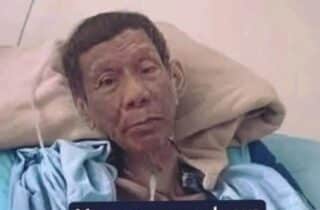Friends of the late strongman Ferdinand Marcos have built him a giant concrete bust off the highway bearing his family name in the boundary of La Union and Benguet.
In December 2002, 16 years after Marcos was ousted by a people revolt, the concrete bust was shattered by an explosion in the dead of night. Communist rebels claimed responsibility for blasting the symbol associated with Marcos’ dictatorship.
Nothing is left of this bust. Nor are there visible memories of martial law for a generation of Filipinos, born after the 1986 Edsa Revolution, who sometimes equate the name Marcos with the ridicule attached to his high-profile widow, Imelda, now representative of Ilocos Norte.
To be forgotten is an ironic punishment for a man of lofty ambitions. And it is this perception that Marcos’ children want to change.
Ilocos Norte Gov. Imee Marcos, Sen. Ferdinand “Bongbong” Marcos Jr. and Irene Marcos-Araneta celebrated their father’s 94th birth anniversary on Sept. 11 by embarking on a new tourist caravan aimed at reintroducing “Marcos the Man” to a new generation, instead of the iron-fisted leader who ruled the country for 20 years.
`Marcos Trail’
Billed as the “Marcos Trail,” the tour gives tourists a glimpse of the colorful life of “the longest running President of the Philippines.”
The trail begins at the Sta. Monica Church in Sarrat town, where the late dictator was born in 1917. This is followed by a tour of Marcos’ Grade 1 classroom at Sarrat Central School. The caravan goes to Batac City where the preserved remains of the former president are encased in glass inside a temperature-controlled mausoleum, and then to Paoay town, which hosts the Malacañang ti Amianan (Malacañang of the North).
The Marcos Museum in Batac has been cleaned, reinvented and reopened as a picture book of Marcos’ life story for a younger audience.
Mannequins representing Marcos and his widow occupy most of the room, dressed to represent the various periods lived by the couple.
The exhibit’s 1939 section explores the first scandal that led Marcos to jail and to his eventual redemption when he proved he was not involved in the murder of Julio Nalundasan, a political rival his father, Mariano.
The exhibit also portrays Marcos’ ouster in 1986, which Imelda described as “Ferdinand’s finest moment.”
It leads the visitor to a small room where a black burial dress is draped over one of two sofas that flank a table filled with letters and a small bust of the dictator.
Behind the furniture looms a message scrawled in black ink: “For every tear you shed, there will be victory.”


